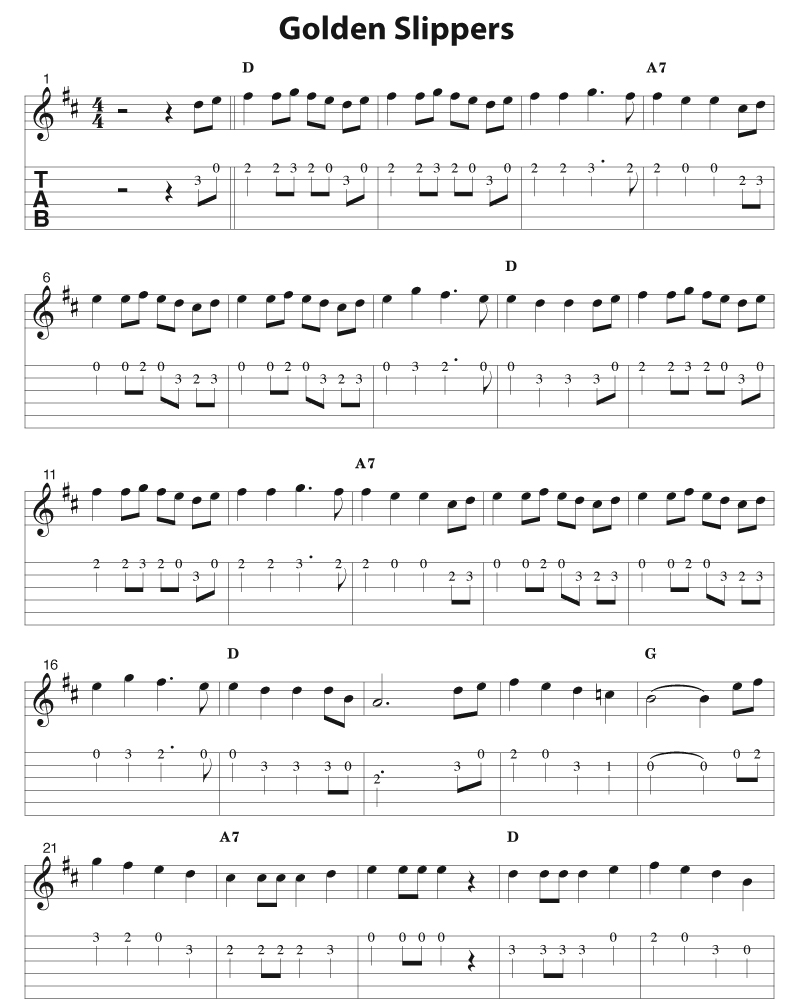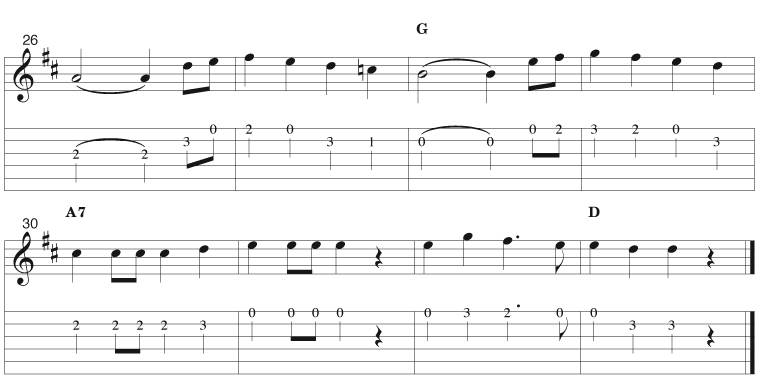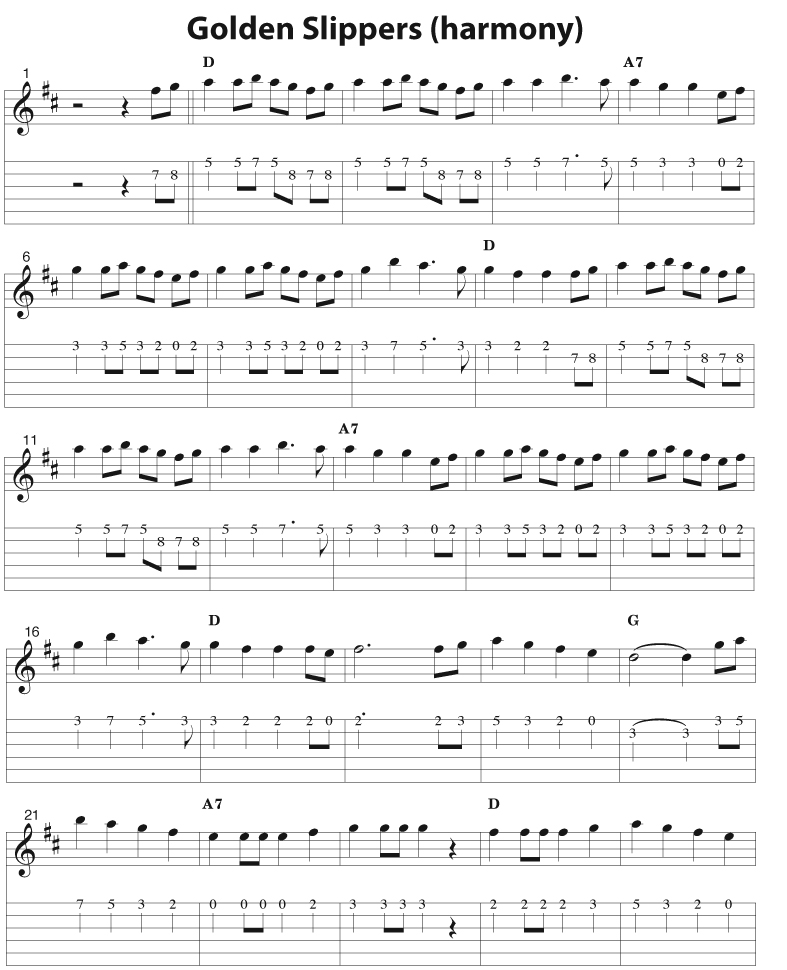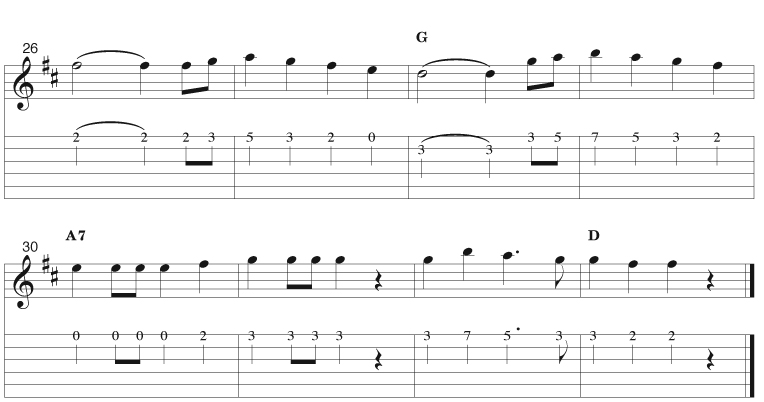|
June 2009 Free Flatpicking Lesson
from
Flatpicking Guitar Magazine
"Golden Slippers"
Hello and welcome to FGM’s
free lesson portion of our monthly newsletter. Once again, I’d like to
thank all those who take the time to email me your thoughts and
positive feedback. I enjoy hearing what you have to say and more that
you write to me, the more interactive I feel with the e-lessons. What
tunes would you like to see featured here?
I feel I have chosen a
great tune for this month. With so many great tunes it is often a
challenge to select one melody over another -- I love so many tunes and
styles of flatpicking. In addition to selecting tunes that a like, I
also try to offer tunes that will improve your overall technique,
enhance your guitar knowledge, and add valuable repertoire to your
flatpicking jams. If “Golden Slippers” is not in your flatpicking
repertoire then grab your guitar and let’s begin. Even if you have
played this song you may find my version interesting and worth
learning.
The Backup:
Playing backup to “Golden Slippers” is rewarding, inviting, and easy.
The A section consists of two chords, D and A. First, we play D D D A
and then we swap the pattern for the answer: A A A D. I am a big fan of
songs that can be played with two chords. There is an intrinsic
simplicity to the two chord song, but it means we have to play with
groove and feeling -- really letting the two chords do their harmonic work.
When playing chord backup on the B
part there is one thing to look out for. On the B part repeat, hold the
A chord one measure longer before resolving back to the D. This gives
our B2 a grander ending, thus distinguishing itself from B1.
The Melody:
I have once again chosen a tune
that has a relentless question and answer theme to it. The first line of
the tune (first four measures) states a wonderful theme that is
answered by the following four measures. This tune is easy to recognize
and memorize because of it’s conversational quality. The B section is
like a winding musical conversation that utilizes rhythmic themes to
make it work. One of my favorite parts is where we strike the C natural
(b7th) on the way to the G chord. This is the only note that is not part
of the D major scale and it seems to be placed so perfectly. It is not
uncommon to hit the flatted seventh of the I chord on route to IV chord,
but in this case I feel it really defines that moment in the melody.
The Harmony:
Once you are feeling comfortable
with the melody, try moving up the neck to the harmony part. Writing
harmonies is not an exact musical science. The framework for harmonizing
in thirds (notes that are three notes away in a major scale) seems to
work best for most fiddle tunes. When harmonizing in thirds we may run
into some strange moments so it is important to take into account what
the chord will be and make the proper adjustments (this sounds like a
good future lesson). Different harmonies will evoke different sounds --
pleasant, bluesy, scary, etc. I think you will find this harmony to be
pleasant and traditional. To hear it all you need two picker friends,
one to play chords, one to pick the melody, and you on the harmony!
Thanks for clicking on this
month’s free e-lesson. If you have any questions, comments, or concerns
on the “Golden Slippers,” past tunes, or any other random thoughts, just
drop me a line at [email protected].




|